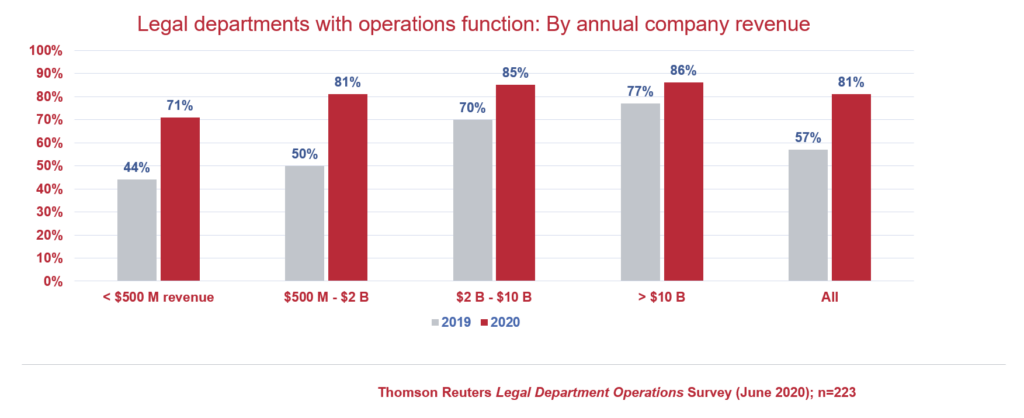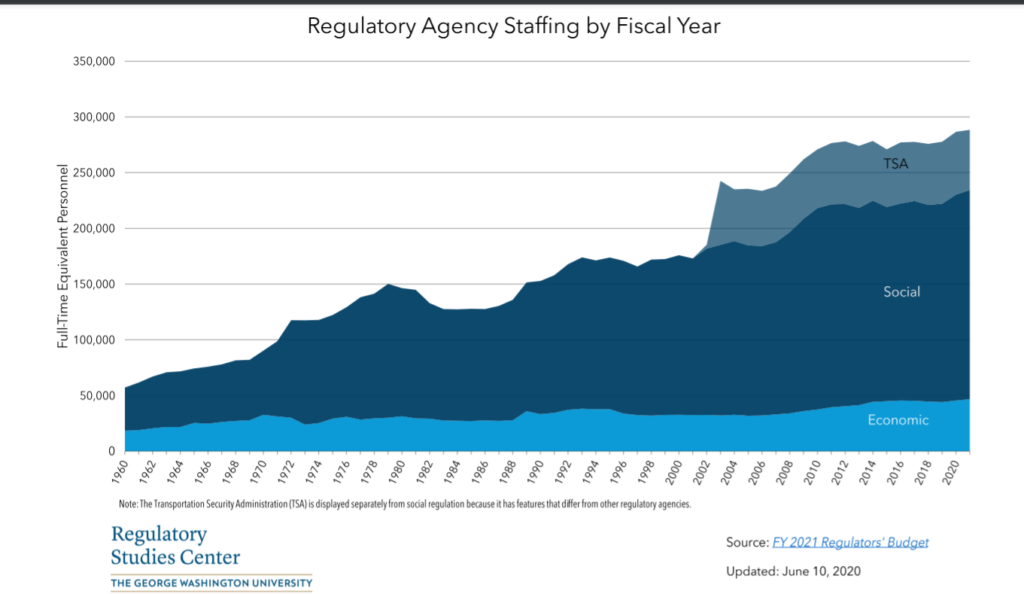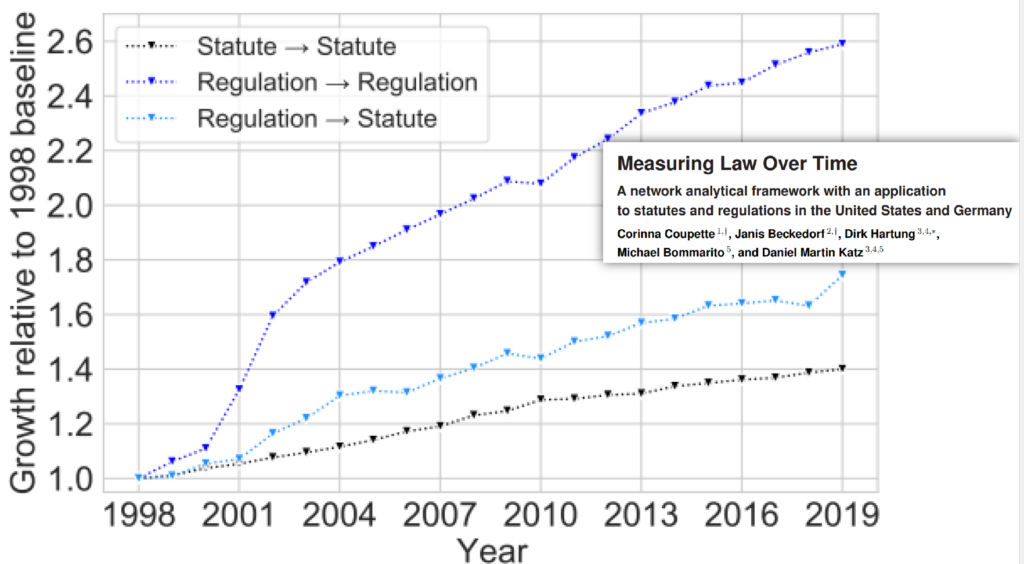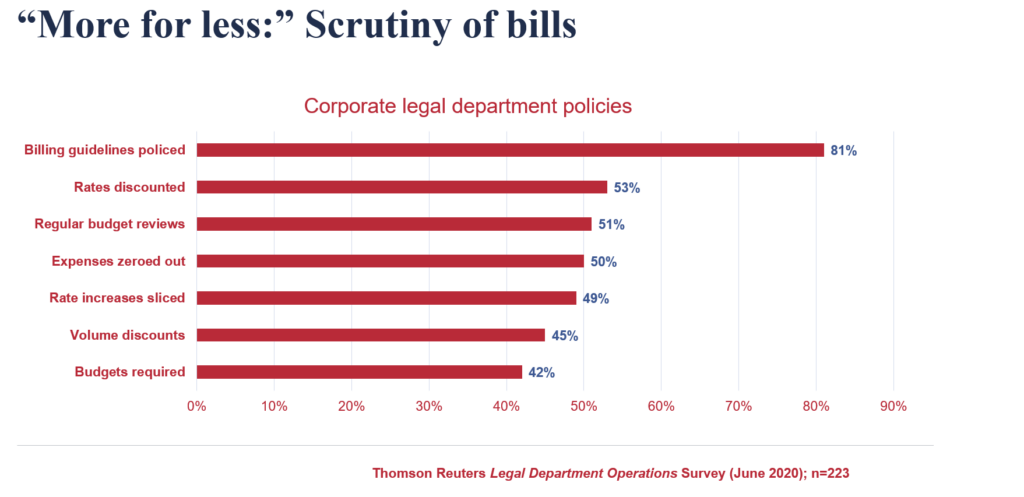We’ve written at fair length about our “maroons/grays” model for segmenting the law firm industry. Essentially, the model rejects customary or traditional dimensions of “compare and contrast” including:
- Size (revenue or headcount)
- Type of firm (litigation boutique, global powerhouse, “category killer,” etc.)
- And geographic footprint.
Instead, our maroons/grays model draws the boundary premised on client selection criteria in hiring a law firm.
For the maroons:
- Truly distinctive “destination” capability
- Price no (real) object
- Rare events in corporate lifecycle with boardroom visibility
And the grays:
- Efficient, preditable, reliable, transparent
- Price-sensitive, from mildly so to lowest-cost-provider wins
- Legal services as a cost of doing business—“running not betting” the company.
Here’s our entry point for today: Grays “scale,” maroons don’t (and don’t need to). But what if grays as conventionally organized can’t scale enough?
What if, in other words, the density, intrusiveness, and combinatorial intensity of the legal framework undergirding our 21stCentury economy is growing so fast that we will fall permanently behind?
This may seem far-fetched—isn’t being busier always better?—but as we’ve recently noted Coronatide has pushed the typical workload into unsustainable territory; the risk is real that exhaustion could lead to things “fraying around the edges” and quality cockups. Nor do we think the tide will recede after the world is vaccinated and we can go back to “normal.” First, we all know that “normal” has been forever changed in terms of how and where we work, and second, the trends accelerating the unmanageable expansion of “scale” were in place prior to, and will not dissipate in the wake of, Coronatide.
But don’t just take our word for it.
The data tells a story of our:
- Responding to the growth of scale by throwing more lawyers at it;
- The increasingly exposed inadequacy of that approach in the face of growing regulatory and legal complexity;
- And the exhaustion of every conventional technique and mechanism that corporate legal departments have at their disposal for containing the cost of the relentlessly growing workload.
Throwing more bodies at it? Indeed:

A recent incarnation of a data series first published, to my knowledge, by Prof. Bill Henderson of Indiana/Maurer School of Law
This shows that over the past two decades the number of lawyers working inhouse has grown just over 700% more than those in law firms.
Yet compare the growth in some handy measures of regulatory tonnage, or density:
- Total pages in the Federal Register;
- Regulatory agency staffing;
- Regulatory agency budgets;
- and the pure growth in statutes and regulations.
And one last “rollup” of key data:
I mentioned that conventional tools for controlling outside counsel expense, fueled by [see above], are all but exhausted. How so?
Here are just two charts I prepared a few months ago showing the “go-to” tools and practices pinned at 11:
 So: Nearly every type of “billing hygiene” hammer, screwdriver, and wrench is being applied widely; and “legal operations” has gone from being essentially unheard-of to practical market saturation.
So: Nearly every type of “billing hygiene” hammer, screwdriver, and wrench is being applied widely; and “legal operations” has gone from being essentially unheard-of to practical market saturation.
I said at the outset that maroons don’t need to “scale,” and I stand by that, but by no means did I mean to imply or for you to infer that they’re immune from this scale challenge.
We know from first-hand experience that some of the gnarliest and most complicated engagements maroons get–serious and threatening regulatory inquiries (into privacy, anticompetitive practices, data security, corporate [mis]govenance, and more) have changed in scope and complexity over the last decade or so. In the good old days, one company would be targeted by one regulator, usually in the US the DOJ or FTC and in Europe the “Serious Frauds Office” in the UK or one of the many Brussels agencies.
Not so today. In a sort of regulatory one-upsmanship, it’s now the exception that there’s one inquiry from one source. A more typical pattern lately is one US federal agency, something out of Brussels and maybe another European jurisdiction, one or more activist states here (California, New York, Texas). They commonly come up with overlapping, conflicting, and even mutually inconsistent demands on different timelines overseen by players with different constituencies and agendas.
And so far the (rational) response of maroons has been to deploy more $1,000+/hour uber-experts. In general, this is the right approach. But this brings us back to where we came in, with burnout and strained capacity.
We’re running out of running room here; we need to try a different approach.
Some years ago the head of “Google X”–the name at the time for its totally out-there incubator for new projects–described their ambitions with an analogy: “If you tell me to build a car that gets 50 mpg, I can do it with off-the-shelf stuff put together with that express end-goal in mind; if the goal is 500 mpg, I need to forget everything I know and leave it behind me.” (Google X is now named “The X Company,” and they call themselves “the moonshot factory.”)
I’m not going to pretend I have a particular “moonshot” approach in mind (I really really don’t as much as I wish I did), but it’s time to start marshalling some serious brainpower and combinatorial thinking behind this. More Belfasts, Manilas, and Wheelings (labor market arbitrage) and linear development of 2020 technology tools aren’t going to do it.
Tackling this will take, yes, lawyers, but Rule #1 must be they can’t sit at the head of the table: We need process engineers, software developers, business process optimization gurus, pricing Ph.D’s, resource allocation jockeys, and probably half a dozen more “allied professions” in the room.
And one last thing:
Trust.








